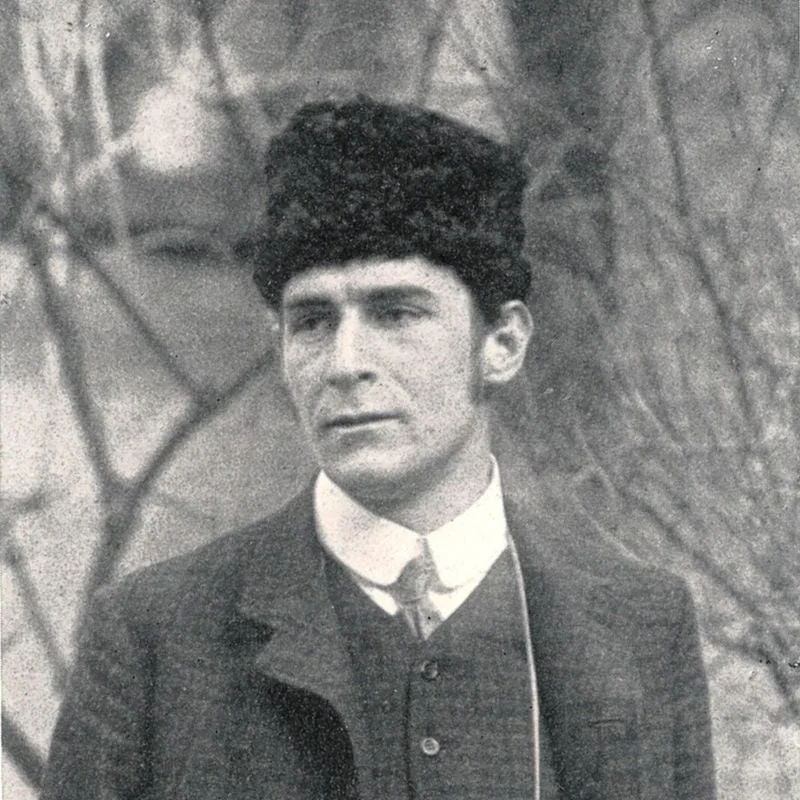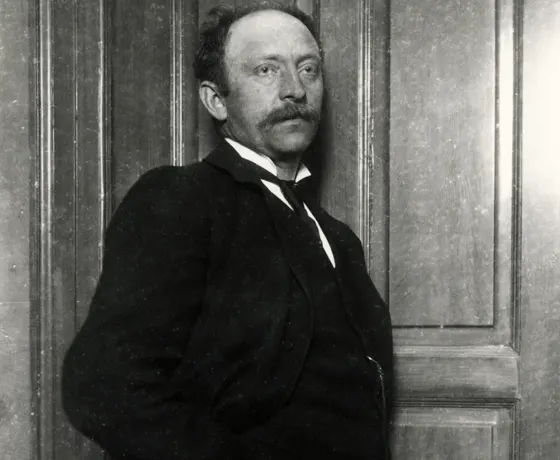Expressionism is a broad art movement that originated in the early 20th century, more specifically in Germany, with the formation of a group called “Die Brücke” in Dresden in 1905. This group consisted of 4 German artists who remarkably didn’t use the term themselves.
The term “Expressionism” was used in modern terms since at least halfway through the 19th century. The style itself has been used much earlier and can be traced back to German Renaissance artist Matthias Grünewald and Greek Mannerist artist El Greco, for example in his painting “View of Toledo,” which dates back to the late 16th century.
The famous Expressionist artists focused on the expression of emotional experiences and have therefore been described as having opposing ideas to the Impressionist artists and Realism artists of the late 19th century.
In that sense, they are therefore more in line with Baroque artists, except for the fact that they didn’t shy away from depicting negativity, something that was avoided at all costs in Baroque art.
So who were the most famous Expressionist artists, people who preferred to depict subjective rather than objective emotions in their works of art? In this post, you’ll find out!
1. Edvard Munch
Edvard Munch (1863-1944) is one of the most famous Norwegian artists in history. One of his most famous paintings is called “The Scream” (1893) and has become one of the most iconic works of art in history and a precursor of the Expressionist art movement which would emerge about a decade later.
Early on in his career, he was mainly influenced by Post-Impressionist artists such as Paul Gauguin and Vincent van Gogh, as well as Art Nouveau artist Henri de Toulouse-Lautrec. He suffered from a mental illness for the duration of his life which influenced his work as he depicted his emotional state which formed the foundation of his distinctive style.

2. Ernst Ludwig Kirchner
Ernst Ludwig Kirchner (1880-1938) was a German artist and one of the founding fathers of the Expressionist art movement. He was one of the members of the art group “Die Brücke” or “The Bridge” in Dresden which is considered to have laid the foundation of Expressionism in 1905.
Kirchner’s work was displayed in the early 20th century in some of the biggest museums and exhibitions in the United States. During World War II, however, the Nazis classified his paintings as “degenerate” and over 600 of his works were either destroyed or sold, resulting in fear which eventually culminated in his suicide in 1938, even though he lived in Switzerland at the time.

3. Wassily Kandinsky

Wassily Kandinsky (1866-1944) was a Russian artist who originally was a successful lawyer and economist who only picked up painting in his early 30s. He settled in Munich in the late 19th century and met some of the artists who would become the most famous Expressionist artists.
Even though he returned to Russia, he ended up back in Germany until the Nazis came to power after which he moved to France. He even became a French citizen in 1939 and created some of his most famous works of art there. Apart from being a leading figure in the Expression art movement, he’s also considered to be one of the pioneers of abstract art.

4. Franz Marc
Franz Marc (1880-1916) was another German artist who played a crucial role in the forming of the Expressionist art movement as he was one of the founders of “Der Blaue Reiter” (The Blue Rider), an art magazine and group of artists who shared similar ideals and who often collaborated.
His most famous works of art depict animals, often horses, and he’s one of those artists whose work was considered “degenerate” by the Nazis. Luckily, most of his paintings survived the Second World War and are not exhibited and sold all over the world. Marc himself died in World War I during the Battle of Verdun in the year 1916.

5. Emil Nolde
Emil Nolde (1867-1956) was a Danish-German artist who was one of the founding members of “Die Brücke,” the original group of 4 artists who defined the art movement. Apart from being a painter, Nolde was also a successful printmaker who is famously known for his use of watercolor.
He was one of the first artists of the 20th century to create paintings using oil and his work is characterized by his fascinating brushwork and expressive use of colors. He often depicted flowers, a reference to the Sunflower paintings created by Vincent van Gogh who he admired.

6. Paul Klee
Paul Klee (1879-1940) was a colleague of the Russian painter Wassily Kandinsky and is famously known for writing the “Paul Klee Notebooks,” a book explaining the theory of color. He was a teacher at the Bauhaus school of art which was closed by the Nazis and gave lectures about his work
His book is now considered to be as important as the notes scribbled down by Leonardo da Vinci during the Renaissance. His work is an expression of his feelings and sense of humor and emphasizes what the Expressionist art movement stood for, a visualization of the perception of the artist!

